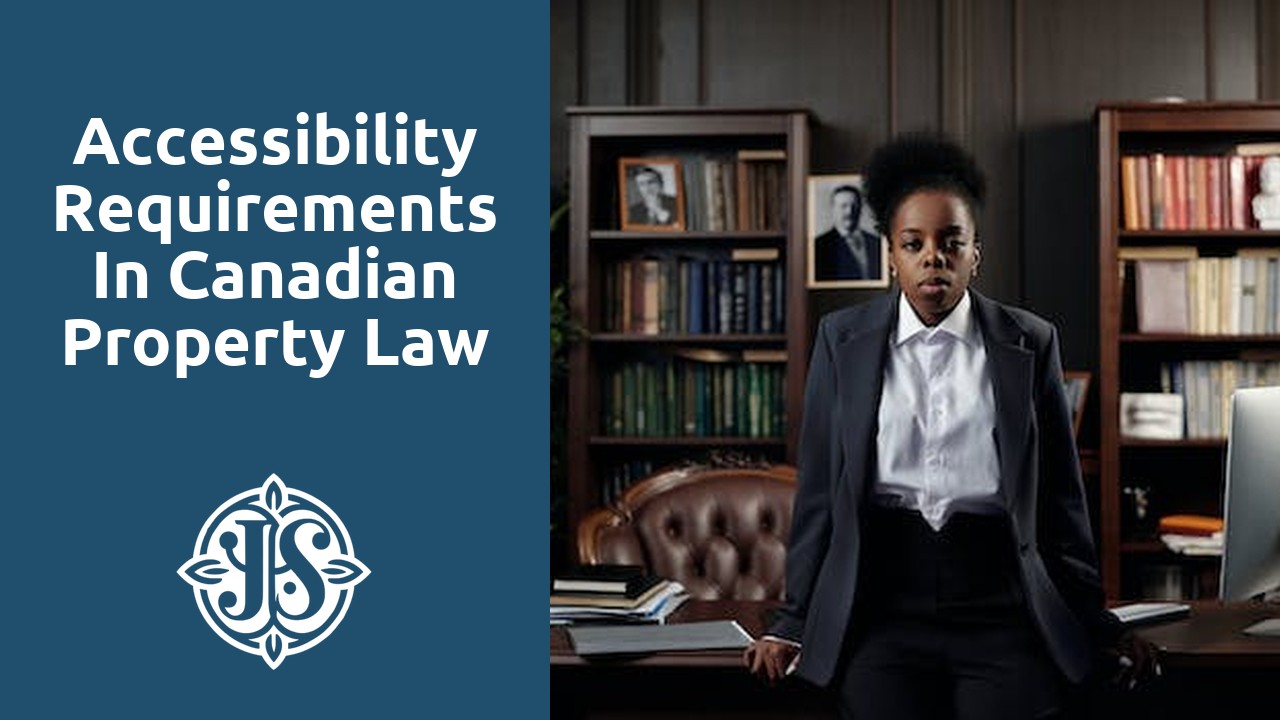Contents
- 1 Ensuring Equal Access: Navigating Property Laws in Canada
- 2 Breaking Down Barriers: Understanding Accessibility Standards
- 3 The Right to Access: A Closer Look at Canadian Property Regulations
- 4 Building an Inclusive Future: Exploring Accessibility in Property Law
- 5 Uncovering Legal Obligations: Accessibility Guidelines for Property Owners
- 6 Empowering Individuals: How Canadian Property Laws Promote Access for All
Table Of Contents
Ensuring equal access to properties is a fundamental principle in Canadian property law. The law recognizes the importance of accessibility for individuals with disabilities and seeks to eliminate barriers that may prevent them from enjoying equal rights and opportunities. Property owners have a legal obligation to ensure that their premises are accessible, allowing everyone to enter and navigate through the property without any hindrances.
To navigate property laws in Canada, it is crucial to understand the concept of reasonable accommodation. This principle requires property owners to make reasonable modifications to their premises to accommodate individuals with disabilities, unless doing so would cause undue hardship. These modifications can include installing ramps, widening doorways, and providing accessible washrooms. By incorporating accessibility features into their properties, owners are not only complying with the law but also creating an inclusive environment that promotes equal access for all.
Breaking Down Barriers: Understanding Accessibility Standards
Breaking Down Barriers: Understanding Accessibility Standards
Accessibility standards play a crucial role in ensuring equal access for all individuals in Canada. These standards are designed to break down barriers and promote inclusivity in various settings, including public and private properties. By understanding these accessibility standards, property owners can take proactive measures to accommodate individuals with disabilities, ultimately fostering a more inclusive society.
In Canada, accessibility standards are governed by federal and provincial laws, such as the Accessibility for Ontarians with Disabilities Act (AODA) and the Canadian Human Rights Act. These laws establish requirements and guidelines that property owners must adhere to in order to provide a barrier-free environment for individuals with disabilities. These standards encompass a range of factors, including physical accessibility, communication practices, and the removal of barriers that may hinder access. By addressing these standards, property owners can ensure that their spaces are accessible to everyone, regardless of their physical or cognitive abilities.
The Right to Access: A Closer Look at Canadian Property Regulations
When it comes to Canadian property regulations, the right to access is a fundamental aspect that cannot be overlooked. In order to ensure equal access for all individuals, property owners and developers must adhere to specific guidelines and regulations outlined by the government. These regulations are put in place to break down barriers and create an inclusive environment where everyone, regardless of ability, can enjoy and utilize various properties.
Under Canadian property law, accessibility regulations cover various aspects such as parking, entrances, common areas, and facilities within a property. Property owners are required to provide accessible spaces, ensure that entrances are easily accessible to individuals with mobility challenges, and make necessary modifications to common areas to accommodate individuals with disabilities. These regulations aim to empower individuals and enable them to navigate properties without facing unnecessary obstacles or discrimination. By closely adhering to these regulations, property owners contribute to building a more inclusive future for all Canadians.
Building an Inclusive Future: Exploring Accessibility in Property Law
One of the key aspects of building an inclusive future lies in exploring the role of accessibility in property law. In Canada, there is a growing recognition that everyone should have equal opportunities to access and enjoy different spaces, whether it be residential or commercial properties. As a result, the field of property law has evolved to incorporate regulations and guidelines that promote accessibility for all individuals, regardless of their physical abilities or disabilities.
One of the fundamental principles that underpins the exploration of accessibility in property law is the belief that everyone should have the right to access and enjoy the spaces they occupy. This means that property owners and managers have an obligation to ensure that their properties are designed and maintained in a way that allows individuals with disabilities to navigate and use them without facing unnecessary barriers. By making buildings and premises more accessible, property laws aim to promote inclusivity and create a society where everyone can participate fully and equally.
Uncovering Legal Obligations: Accessibility Guidelines for Property Owners
Uncovering Legal Obligations: Accessibility Guidelines for Property Owners
As property owners in Canada, it is crucial to understand the legal obligations that come with ensuring accessibility within our premises. Accessibility guidelines have been put in place to promote equal access for individuals with disabilities, allowing them to navigate and enjoy public spaces without discrimination. These guidelines outline specific requirements that property owners must comply with to remove barriers and accommodate the diverse needs of individuals.
One key aspect of accessibility guidelines is the provision of accessible entrances and pathways. This can include features such as ramps, elevators, and widened doorways to enable individuals with mobility impairments to enter and maneuver within a property easily. Additionally, the guidelines emphasize the importance of accessible parking spaces, which should be located close to entrances and designed with adequate dimensions to accommodate wheelchair accessibility. By adhering to these requirements, property owners can contribute to a more inclusive environment for all individuals, regardless of their physical abilities.
Empowering Individuals: How Canadian Property Laws Promote Access for All
Canadian property laws play a crucial role in promoting access and inclusion for all individuals. By implementing specific regulations and guidelines, these laws empower individuals with disabilities to navigate and utilize various properties effectively. One important aspect of Canadian property laws is the requirement for accessible entrances and exits. This ensures that individuals with mobility challenges can enter and exit buildings without any barriers or limitations. The inclusion of accessible ramps, elevators, and automatic doors not only promotes independence but also eliminates discrimination against individuals with disabilities. Furthermore, Canadian property laws also mandate the provision of accessible washroom facilities, allowing individuals with mobility or sensory impairments to navigate these spaces comfortably and with dignity. These laws emphasize the importance of equal access and promote a more inclusive and accessible society for all Canadians.
Related Links
Protecting Your Real Estate Assets: Legal Tools and Tips
Boundary Disputes: Legal Solutions for Property Owners




